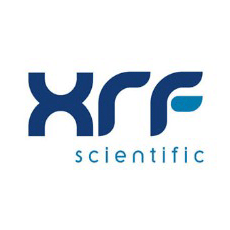Accuracy, proficiency, and quality control are vital in steel production. One prominent approach that improves these qualities is thermogravimetric analysis (TGA).
TGA calculates sample weight loss and gain via thermal and time functions. It provides information about how different materials respond to specific heating rates.
This article explores why TGA has become crucial in steel manufacturing and discusses how it assists the industry’s progression toward better quality and more effective production procedures.

Image Credit: BildWerk/Shutterstock.com
Understanding Material Properties
When utilized, TGA’s primary role is discovering more about materials and their response to heat. Examples of material characterization include:
- Adsorption
- Absorption
- Chemisorptions
- Thermal decomposition
- Weight loss/gain
Steel is an alloy made predominantly of iron, carbon, and other elements. Its composition and impurity presence significantly impact its properties, including robustness, flexibility, and corrosion resistance.
TGA accurately analyzes steel composition, including carbon content determination and other present alloying elements. This evaluation is pivotal for ensuring the steel meets certain guidelines and performance requirements.
Improving Quality Control
Quality control is fundamental in steel production. TGA assists this practice by offering insights into steel components’ thermal stability and decomposition behavior.
By recognizing how different temperatures affect steel, manufacturers can enhance the heat treatment processes necessary for creating desired mechanical properties. This yields higher-quality steel that can endure the demanding applications it is typically utilized for.
Cutting Production Costs
TGA can help cut costs in steel production. Manufacturers can improve their production processes by using thermal analysis on steel properties, lowering energy consumption and decreasing waste. It can help establish the most effective temperature range for processes like sintering and annealing, which can save energy.
Advancing Research and Development
In research and development, TGA is invaluable for creating new steel grades and enhancing existing ones. It offers insights into the impacts of various alloying elements and heat treatments on steel properties.
This information is essential for steel industry pioneers, enabling them to test novel compositions and treatment approaches when heating a sample to boost performance and develop specialized steel types for numerous applications.
Environmental Considerations
The steel industry faces growing pressure to decrease its environmental impact. TGA supports this by offering insights that help cut waste and improve energy efficiency.
By analyzing the thermal properties of steel and its materials, manufacturers can create greener production processes that align with worldwide sustainability goals.
Regulatory Compliance
Steel products depend on numerous global policies and guidelines. TGA is key in ensuring conformity to these standards. It delivers a precise and thorough analysis of steel composition and properties.
This helps steel manufacturers meet regulatory requirements and increases product confidence and reliability on the market.
Improving Product Reliability
The dependability of steel products is critical, particularly in aerospace, automotive, and construction.
TGA ensures the steel employed in these sectors has the required properties to function under stress and in diverse environmental conditions, increasing the overall reliability and safety of end products, which is crucial in such fields.
Try TGA for Steel Product Characterization
TGA is key in advancing steel production, providing detailed insights into material properties. This supports quality control, lowers production costs, and ensures environmental and regulatory standard compliance, becoming increasingly valuable in the steel industry.
As demand rises for high-quality, sustainable, and reliable steel, TGA’s role in meeting these pressures becomes more critical. Manufacturers who use TGA material characterization are well-equipped to lead in innovation, quality, and sustainability.

This information has been sourced, reviewed and adapted from materials provided by XRF Scientific.
For more information on this source, please visit XRF Scientific.